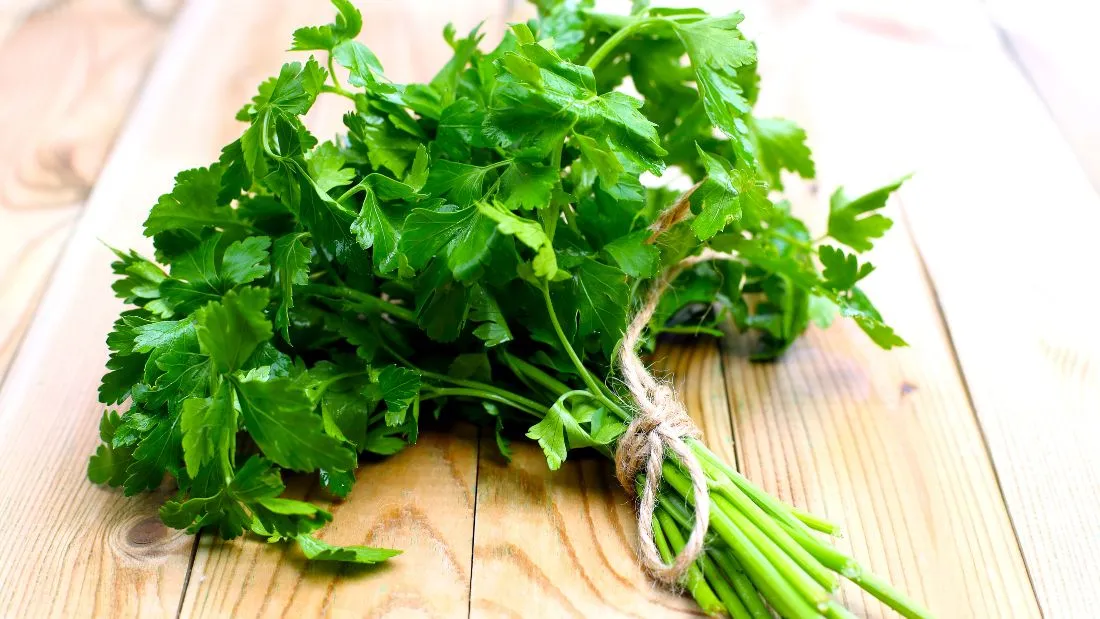Parsley

This herb, native to the Mediterranean region, became hugely popular in the Middle Ages. It has been widely cultivated all over Europe first and eventually also across the world.
What’s the difference between flat-leaf and curly parsley?
Flat-leaf and curly parsley are the same species, only different varieties. The flat-leaf (also called Italian) variety is said to be more aromatic and have stronger flavour while the curly one is milder. Nutritionally, they are very similar.
Parsley nutrition
Parsley is used in relatively small quantities, so the amount of protein, fat and carbohydrates is negligible but where parsley truly shines is in micronutrients.
Two tablespoons of fresh, chopped parsley provide a quarter of your recommended daily vitamin C intake, more than 100 per cent of the recommended vitamin K intake and small amounts of calcium, iron, potassium and magnesium. Vitamin C is not just important for a healthy immune system, it’s also vital in protein formation and wound healing, while vitamin K is needed for healthy blood-clotting and bone maintenance.
Parsley is also rich in beta-carotene that the body converts into vitamin A – vital for healthy skin, immune system and eye health. On top of that parsley is an excellent source of lutein and zeaxanthin – two antioxidants that are vital to healthy eyes and vision.
As if that wasn’t enough already, there’s more! Parsley contains other powerful antioxidants, too – including flavonoids which have anti-inflammatory effects and may help prevent cancer.
And there’s another perk that parsley offers – it’s naturally high in nitrates, compounds that help to dilate your blood vessels, which helps to lower your blood pressure.
People prone to kidney stones may have been warned that parsley contains oxalates – compounds that can increase the risk of kidney stones forming – and should avoid it. However, we eat parsley only in small amounts so this is not of concern.
Parsley health benefits
Parsley has yet more health benefits, beyond being a great source of micronutrients. It supports digestion, can help alleviate bloating and reduce spasms. It’s also a natural diuretic – it increases urine production, which helps to keep the kidneys healthy.
How to use parsley?
Most of us simply sprinkle parsley onto dishes or throw a handful into soups and sauces – see what else you can do with it! Find inspiration, including a vibrant, vitamin-packed tabbouleh at our Vegan Recipe Club recipes with parsley!




